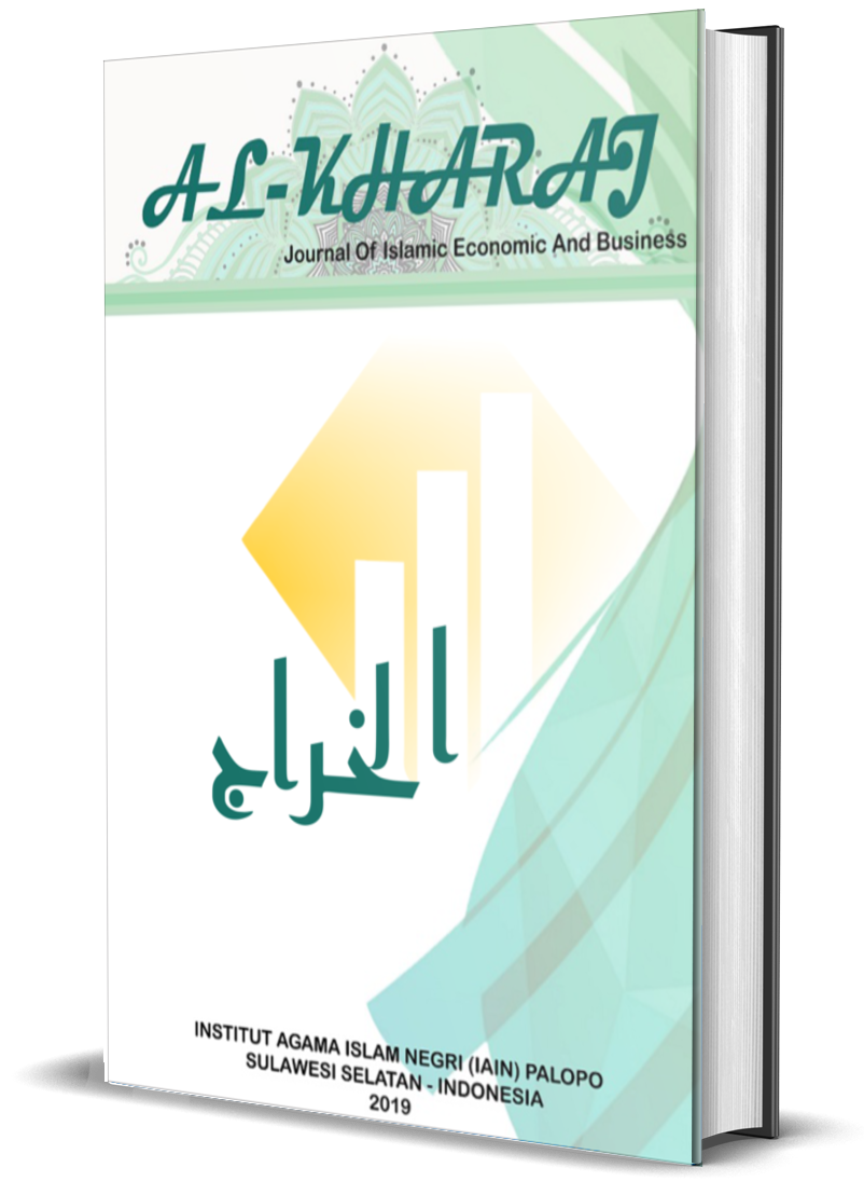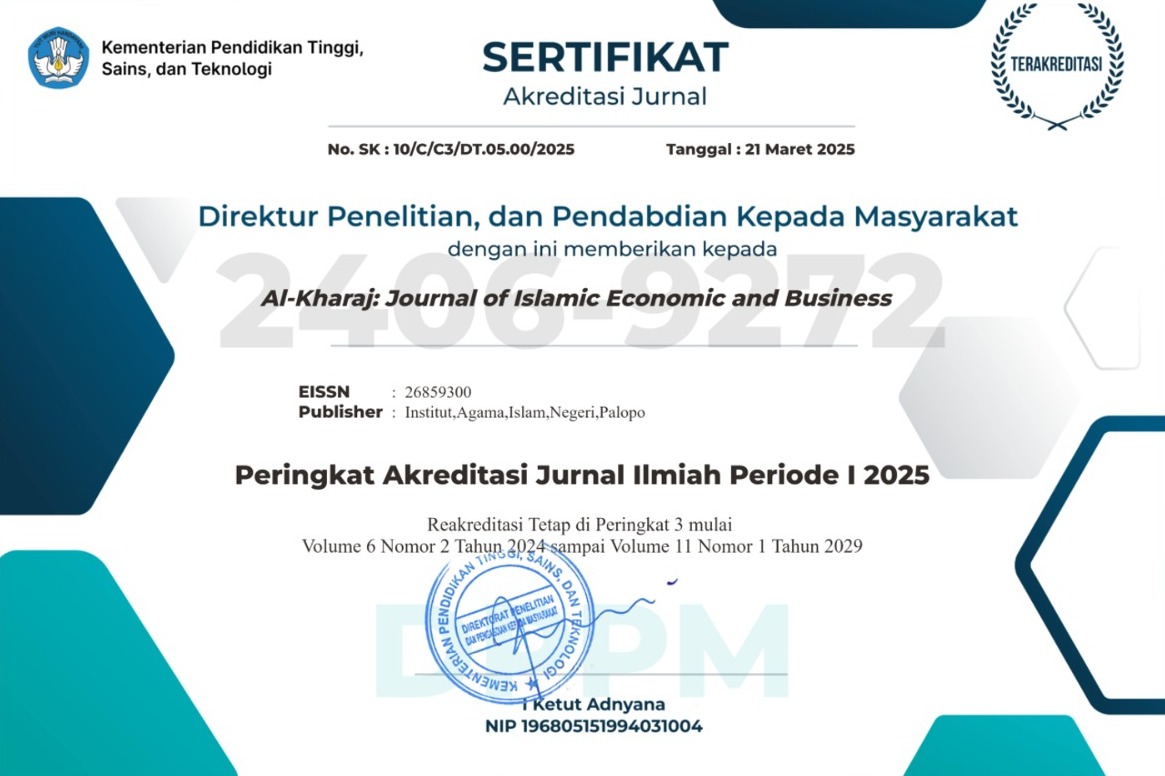Promotional Strategies to Increase Sales on TikTok Shop in the Digital Era from an Islamic Perspective (Study on the Beautystore.Mms TikTok Account in Baturaja)
DOI:
https://doi.org/10.24256/kharaj.v7i3.7828Keywords:
Strategi Promosi Digital, TikTok Shop, Ekonomi Islam, BeautystoreMmsAbstract
The development of information technology and digital marketing, particularly through the social media platform TikTok, has changed the product promotion paradigm among small and medium enterprises (MSMEs). This study examines the digital promotion strategy of the Beautystore.Mms TikTok account in Baturaja and its alignment with Islamic economic principles. Using a qualitative, case study-based approach, data was collected through interviews, observation, and documentation. The results show that the use of TikTok's creative features, such as TikTok ads, customer testimonials, and incentives in the form of gifts and free shipping, successfully increased sales and customer loyalty. This promotional strategy is comprehensively integrated into the marketing mix (4Ps): certified halal products, competitive pricing, timely distribution, and innovative promotions. Most business practices have adopted Islamic ethical and sharia standards, particularly the principles of honesty, justice, and trustworthiness, although the monotheistic aspects of Islamic economics have not been fully internalized. This study confirms that harmonizing modern digital marketing technology and Islamic business ethics can create an economically, morally, and socially sustainable MSME business model in the digital era.
References
Ahmed, R.R., Streimikiene, D., & Soomro, R.H. (2021). The impact of digital marketing on consumer buying behavior in the post-COVID-19 era. Sustainability, 13(14), 7684.https://doi.org/10.3390/su13147684
Alalwan, AA, Rana, NP, Dwivedi, YK, & Algharabat, R. (2017). Social media in marketing: A review and analysis of the existing literature. Telematics and Informatics, 34(7), 1177–1190.https://doi.org/10.1016/j.tele.2017.05.008
Chaffey, D., & Ellis-Chadwick, F. (2019). Digital marketing (7th ed.). Pearson Education.
Dwivedi, Y. K., Ismagilova, E., Hughes, D. L., Carlson, J., Filieri, R., Jacobson, J., ... & Wang, Y. (2021). Setting the future of digital and social media marketing research. International Journal of Information Management, 59, 102168.https://doi.org/10.1016/j.ijinfomgt.2020.102168
Eid, R., & El-Gohary, H. (2015). The role of Islamic religiosity on the relationship between perceived value and tourist satisfaction. Tourism Management, 46, 477–488.https://doi.org/10.1016/j.tourman.2014.08.003
Fietkiewicz, K. J., & Stock, W. G. (2018). TikTok as a new platform for young people's creative expression: A content analysis. International Journal of Social Media and Interactive Learning Environments, 6(2), 116–131.
Hassan, A., & Harahap, S.S. (2010). Exploring corporate social responsibility disclosure: The case of Islamic banks. International Journal of Islamic and Middle Eastern Finance and Management, 3(3), 203–227.https://doi.org/10.1108/17538391011072417
Kaplan, A. M., & Haenlein, M. (2010). Users of the world, unite! The challenges and opportunities of social media. Business Horizons, 53(1), 59–68.https://doi.org/10.1016/j.bushor.2009.09.003
Kemp, S. (2024). Digital 2024: Global overview report. DataReportal. Retrieved fromhttps://datareportal.com
Kotler, P., & Keller, K. L. (2016). Marketing management (15th ed.). Pearson.
Kurniawati, E., & Hidayat, T. (2022). Digital promotion strategies for MSMEs through TikTok to increase sales of local products. Journal of Management and Entrepreneurship, 24(2), 88–101.
Lou, C., & Yuan, S. (2019). Influencer marketing: How message value and credibility affect consumer trust of branded content on social media. Journal of Interactive Advertising, 19(1), 58–73.https://doi.org/10.1080/15252019.2018.1533501
Mangold, W.G., & Faulds, D.J. (2009). Social media: The new hybrid element of the promotion mix. Business Horizons, 52(4), 357–365.https://doi.org/10.1016/j.bushor.2009.03.002
Mukherjee, S., & Banerjee, S. (2021). Social media marketing and consumer engagement: A literature review. Journal of Business Research, 131, 773–789.https://doi.org/10.1016/j.jbusres.2020.10.042
Nugroho, A., & Sari, D. (2023). The influence of TikTok marketing on purchasing decisions of generation Z consumers. Journal of Communication Studies, 20(1), 55–67.
Othman, A., & Owen, L. (2002). Adopting and measuring customer service quality in Islamic banks: A case study in Kuwait Finance House. International Journal of Islamic Financial Services, 3(1), 1–26.
Ramaswamy, V., & Ozcan, K. (2016). Brand value co-creation in a digitalized world. Springer.
Saifuddin, M., & Fauzi, A. (2022). Implementation of sharia principles in promoting halal products through social media. Journal of Islamic Economics and Business, 8(1), 45–60.
Statista. (2024). TikTok user demographics worldwide. Retrieved from https://www.statista.com
Sun, Y., Shao, X., Li, X., Guo, Y., & Nie, K. (2019). How live streaming influences purchase intentions in social commerce: An IT affordance perspective. Electronic Commerce Research and Applications, 37, 100886.https://doi.org/10.1016/j.elerap.2019.100886
Syafrida, L., & Yuliani, E. (2021). The influence of digital marketing on increasing sales of MSME products during the pandemic era. Scientific Journal of Economics and Business, 18(2), 67–78.
Valaei, N., & Rezaei, S. (2017). Social media marketing and consumer engagement: A review and future research agenda. Marketing Intelligence & Planning, 35(5), 699–718.
Wang, Y., Yu, C., & Fesenmaier, D. R. (2002). Defining the virtual tourist experience. Annals of Tourism Research, 29(4), 999–1008.
Wong, A.H., & Tan, T.S. (2023). TikTok Shop and e-commerce growth in Southeast Asia. Asia Pacific Journal of Marketing and Logistics, 35(4), 856–873.https://doi.org/10.1108/APJML-05-2022-0412
Yuswohady. (2020). Marketing to the middle class Muslims. Scholastic.
Downloads
Published
How to Cite
Issue
Section
Citation Check
License
Copyright (c) 2025 Welin Ariska Nenti, Rofiqoh Rofiqoh , Reny Shinta Sari

This work is licensed under a Creative Commons Attribution-ShareAlike 4.0 International License.
Authors retain copyright and grant the journal right of first publication with the work simultaneously licensed under a Creative Commons Attribution-ShareAlike 4.0 International License. In line with the license, authors are allowed to share and adapt the material. In addition, the material must be given appropriate credit, provided with a link to the license, and indicated if changes were made. If authors remix, transform or build upon the material, authors must distribute their contributions under the same license as the original.









